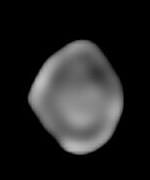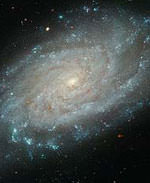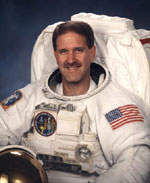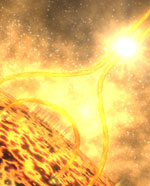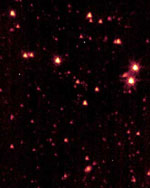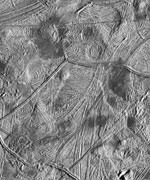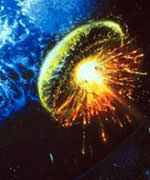
Image credit: NASA
As potentially killer asteroids are announced on an almost yearly basis, the public is started to get a little jaded about the risks humanity faces. How can governments and space agencies confront a threat that can only be a “maybe” until it’s too late to do anything about it? Here’s my opinion.
Well, you can all breath a sigh of relief, 2003 qq47 isn’t going to smash into Earth on March 21, 2014 and cause widespread death and destruction. But then, if you’ve been a regular follower of space news, you’re probably not really surprised. Astronomers release a warning almost every year that a space rock has some outside chance of striking the Earth, and then revise their estimates shortly afterwards thanks to more observations.
The first big rock to freak out the public was Asteroid 1997 XF11; it was supposed to strike the Earth in October 26, 2028. Even though the original threat was still remote, the mass media picked up on this. There were full-page articles in major newspapers, the cover of magazines, and on the evening news. Astronomers quickly followed up the story with a retraction. Not only would XF11 miss the Earth, it would miss by almost a million kilometres, or 2.5 times further than the Moon.
New reports of killer asteroids have come out in the following years, with wiser astronomers being a little more conservative in their predictions. With QQ47, the first stories pegged the chances of a strike at 1 in 909,000; not much higher than the background risk that the Earth faces every year from getting hit by an asteroid. The risk has since been downgraded.
As automated asteroid searches continue to search the sky, potential planet smashers are going to be spotted quite regularly. Astronomers will provide conservative calculations, and a jaded public will treat each announcement with even more skepticism. When the 37th potential killer asteroid is announced, it’ll make little more than a blip in the general media – that’s understandable.
The unspoken goal for finding asteroids is to prevent one of them from ever striking the Earth and causing damage. In theory, the sooner you find a killer asteroid, the longer you have to adjust its orbit and save the Earth from destruction. If a collision is only a couple of months away, there’s little to do but prepare for the worst. But if it’s years or even decades away, spacecraft could be launched to nudge the asteroid into a less hazardous trajectory.
Astronomers are going to keep a watchful eye on the sky, to alert governments and the public to any future risks. But the problem is that astronomers deal in probabilities. They won’t say a certain asteroid WILL hit the Earth (like in Armageddon); instead they’ll say that it can hit the Earth.
That it may hit the Earth.
Will governments and space agencies be decisive enough to spend billions of dollars changing an asteroid’s orbit when they aren’t sure it’s even necessary. The longer you wait, the better the calculations become, but the less time you have to defend against it. With more data, astronomers will likely be tracking dozens of potential Earth-crossers with varying risks and dates that they’ll strike our planet. How do we decide which asteroids need to be moved and which can wait?
I don’t think we’re ever going to have a clear-cut challenge that will unite humanity against a common threat. If we did, it would probably only be months away and there’d be little we could do about it. Just take a look at global warming. Even though the evidence seems to be saying that humans have warmed the planet a degree in the last century, the worldwide response is denial and procrastination.
So what’s the solution? I honestly don’t know if governments and space agencies can really get organized and decisive around such a nebulous threat (the threat is real, though, with the potential for unlimited damage). Investing in basic research is probably the best solution; better funding for observatories to discover and map asteroid trajectories; new propulsion systems that could help push an asteroid out of the way. Maybe if engineers deliver better solutions, it will help procrastinating governments take action at the last minute.

